Overview
The article presents ten transformative ways augmented reality (AR) significantly enhances project efficiency in construction. Key benefits include:
- Improved collaboration
- Real-time visualization
- Early issue identification
By integrating AR technologies, construction teams can streamline workflows, reduce errors, and achieve notable improvements in design accuracy and safety. These advancements ultimately lead to more effective project execution and substantial cost savings. Embracing AR is not just a technological upgrade; it is a strategic move that positions construction firms at the forefront of industry innovation.
Introduction
The construction industry is experiencing a transformative shift as augmented reality (AR) technologies emerge as powerful tools for enhancing project efficiency. Research indicates that by integrating AR into various stages of construction, teams can:
- Visualize projects in real-time
- Streamline communication
- Identify potential issues before they escalate
However, despite these promising benefits, many organizations encounter significant challenges related to:
- Technology adoption
- Investment costs
How can construction professionals leverage AR to navigate these hurdles and revolutionize their project management practices? The time for action is now; collaboration and strategic investment in AR can lead to unprecedented advancements in efficiency and effectiveness.
Magic Playbox: Enhancing Construction Engagement with Immersive AR Solutions
Magic Playbox harnesses its expertise in XR technology to craft immersive augmented reality in construction solutions tailored specifically for the building sector. By overlaying digital models onto physical work sites, teams gain the ability to visualize projects in real-time, significantly enhancing collaboration and decision-making processes. This innovative approach not only fosters greater engagement among stakeholders but also aids in the early identification of potential issues during the construction phase. Ultimately, this leads to more efficient project execution, showcasing the transformative power of augmented reality in construction.
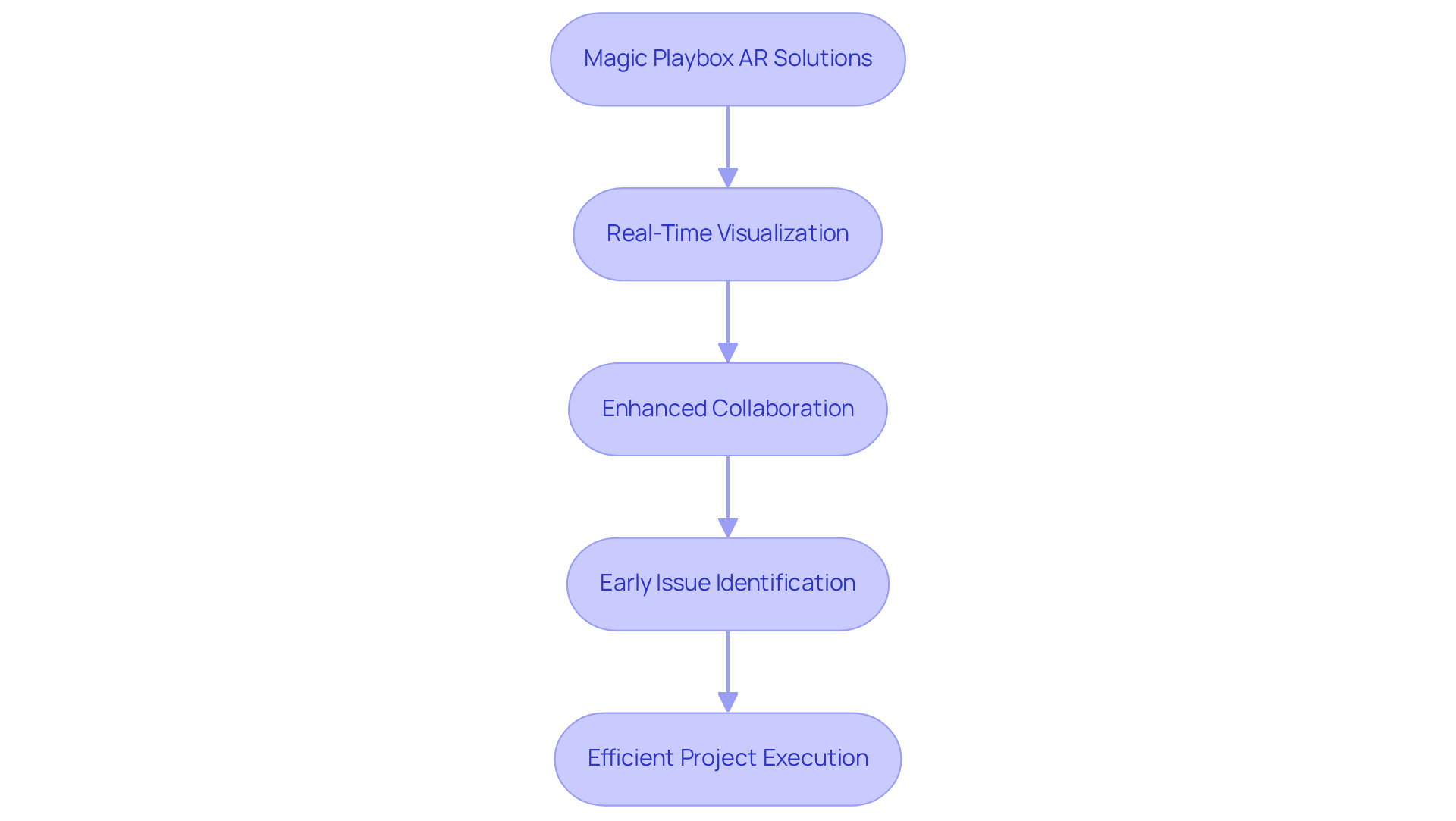
Trimble: Revolutionizing Project Visualization and Collaboration with AR
Trimble's augmented reality in construction solutions, including SiteVision, empower construction professionals to visualize 3D models within real-world environments. This innovative technology significantly enhances collaboration by enabling teams to directly observe design intent on-site, fostering real-time discussions and adjustments. Eleftherios Giotis, a Surveying Engineer, emphasizes that "being able to share information between all these is vital," underscoring the critical importance of effective communication among teams. By seamlessly integrating AR with management tools, Trimble simplifies workflows and reduces errors, resulting in enhanced project outcomes.
However, challenges such as high initial investment costs and resistance to new technology can impede adoption. Statistics indicate that:
- 82% of general contractors are employing mobile applications on job sites
- 72% of specialty contractors are employing mobile applications on job sites
This highlights a rising trend towards digital solutions that enhance efficiency and precision in project processes. Furthermore, 54% of contractors emphasize the capacity to collect precise information from the field as a key enhancement area, illustrating the role of AR in improving data gathering and management. The application of augmented reality in construction, including tools like the Trimble XR10 and Microsoft HoloLens, has demonstrated significant improvements in project planning and real-time problem-solving, ultimately transforming how teams approach building projects.
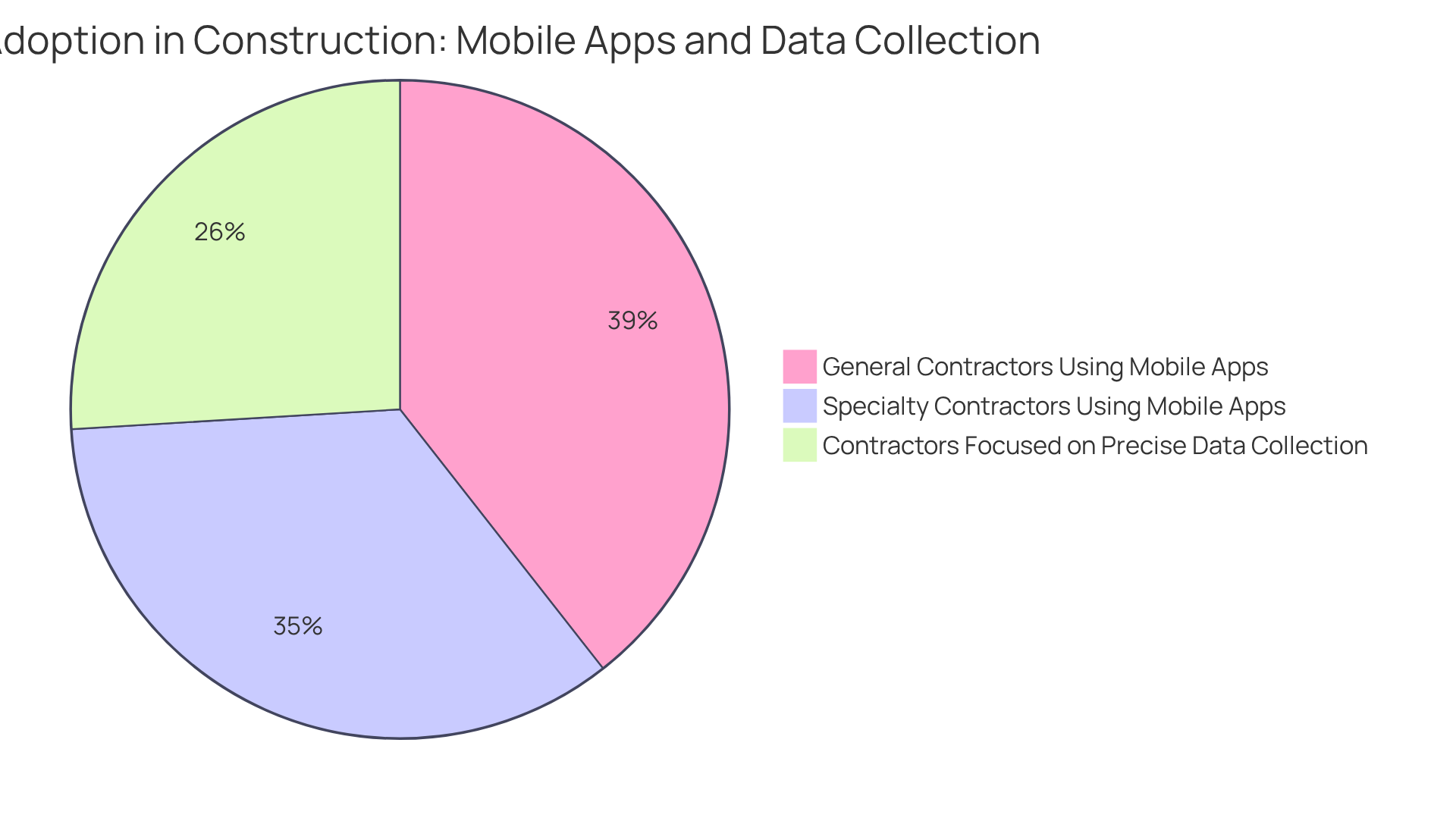
Autodesk: Improving Design Accuracy and Efficiency through Augmented Reality
Autodesk integrates augmented reality into its design software, empowering architects and engineers to visualize their designs within the actual construction site context. This capability significantly enhances design precision, enabling teams to identify discrepancies early and reducing the likelihood of costly rework. By facilitating real-time feedback and collaboration, Autodesk's AR tools dramatically improve overall project efficiency.
However, organizations encounter challenges when integrating AR, such as hardware compatibility and scalability issues. To fully harness the potential of AR technologies, many organizations are investing in tailored training programs for their design teams. Research indicates that utilizing AR in building can enhance design accuracy by up to 30%, underscoring its transformative potential for traditional workflows. Moreover, organizations employing AR technologies report substantial cost savings, with some initiatives achieving reductions in design-related expenses by as much as 20%.
By embracing AR, building groups can make informed decisions swiftly, ensuring that designs align with real-world conditions and client expectations. The integration of AR is not just an upgrade; it's a strategic move toward a more efficient and precise future in design.
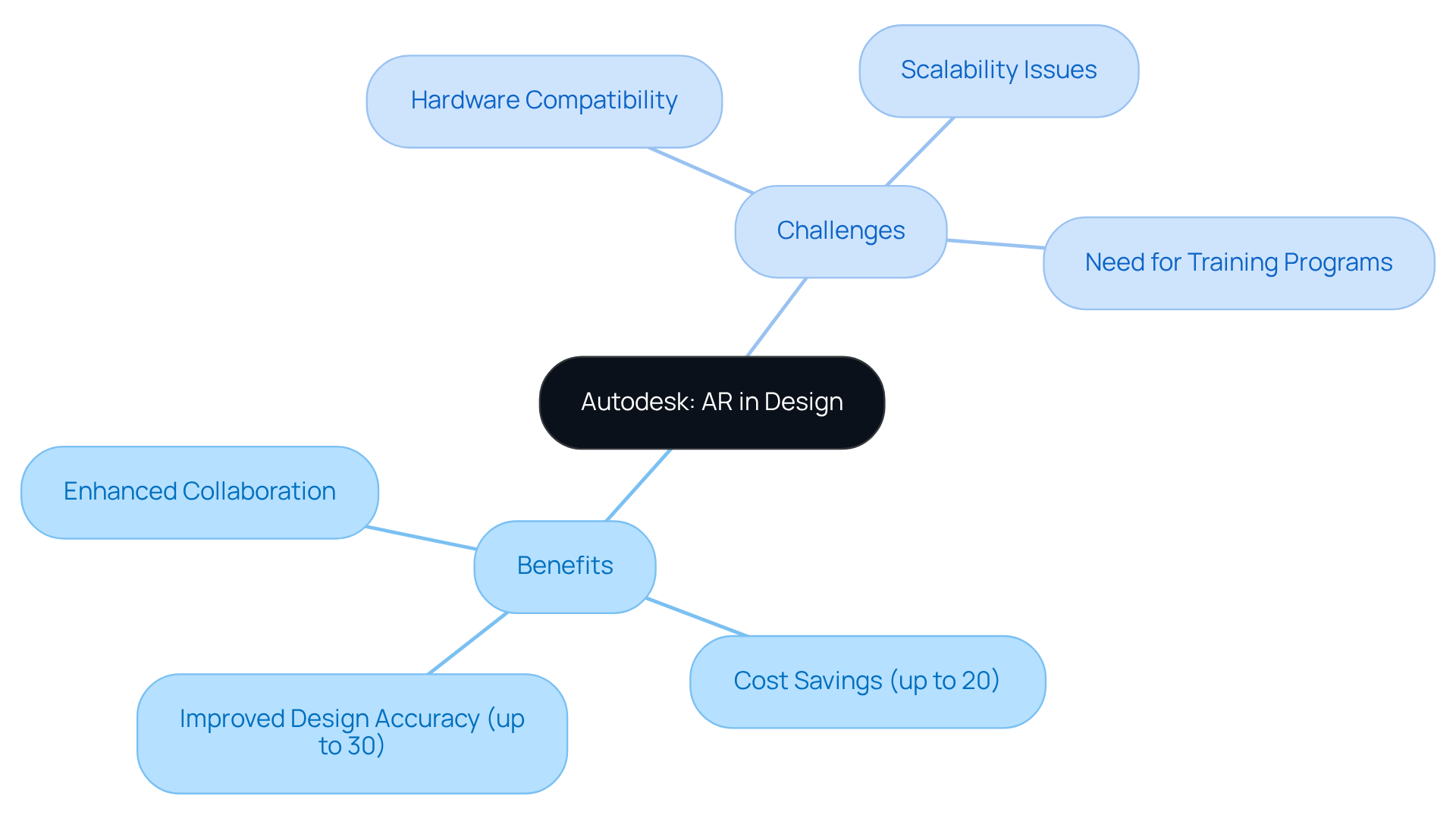
Gamma AR: Solving Construction Challenges with Practical Augmented Reality Applications
Gamma AR delivers powerful applications that utilize augmented reality in construction, empowering building groups to visualize project plans and monitor on-site progress effectively. By seamlessly overlaying digital information onto physical environments, Gamma AR demonstrates the use of augmented reality in construction, allowing workers to identify potential issues before they escalate, thereby enhancing safety and operational efficiency. This proactive approach to problem-solving is not just beneficial; it is essential in the fast-paced building sector. Embrace this innovative technology to stay ahead of challenges and drive project success.
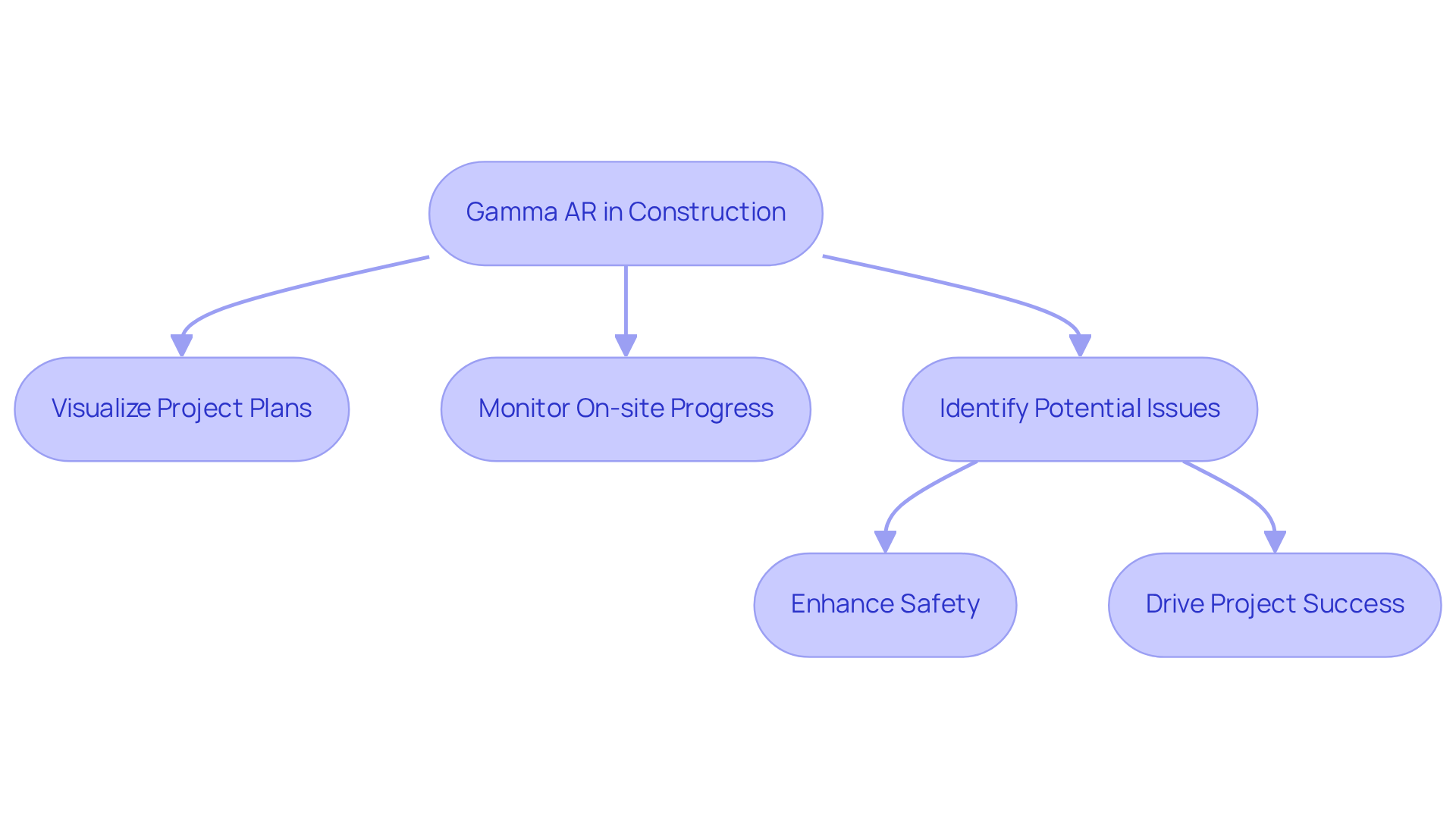
VGIS: Visualizing Underground Utilities with Augmented Reality Technology
VGIS utilizes augmented reality in construction to visualize underground utilities, enabling teams to accurately pinpoint the location and condition of infrastructure prior to the start of excavation. This innovative capability significantly mitigates the risk of damaging existing utilities, which can result in costly delays and safety hazards; excavation damages in North America are estimated at a staggering $6 billion annually.
By delivering unobstructed views and holographic projections, VGIS enhances decision-making and project planning. Research indicates that AR can reduce job completion time by as much as 50%, with 40% of locators managing to halve their job time, translating into substantial cost savings and improved safety outcomes.
For example:
- 84% of participants reported that vGIS simplified their tasks
- 49% acknowledged its role in preventing issues during the locate process
- Although 85% of participants noted no impact on safety, augmented reality in construction not only streamlines operations but also fosters a safer working environment, establishing itself as an essential tool in the modern management of building projects.
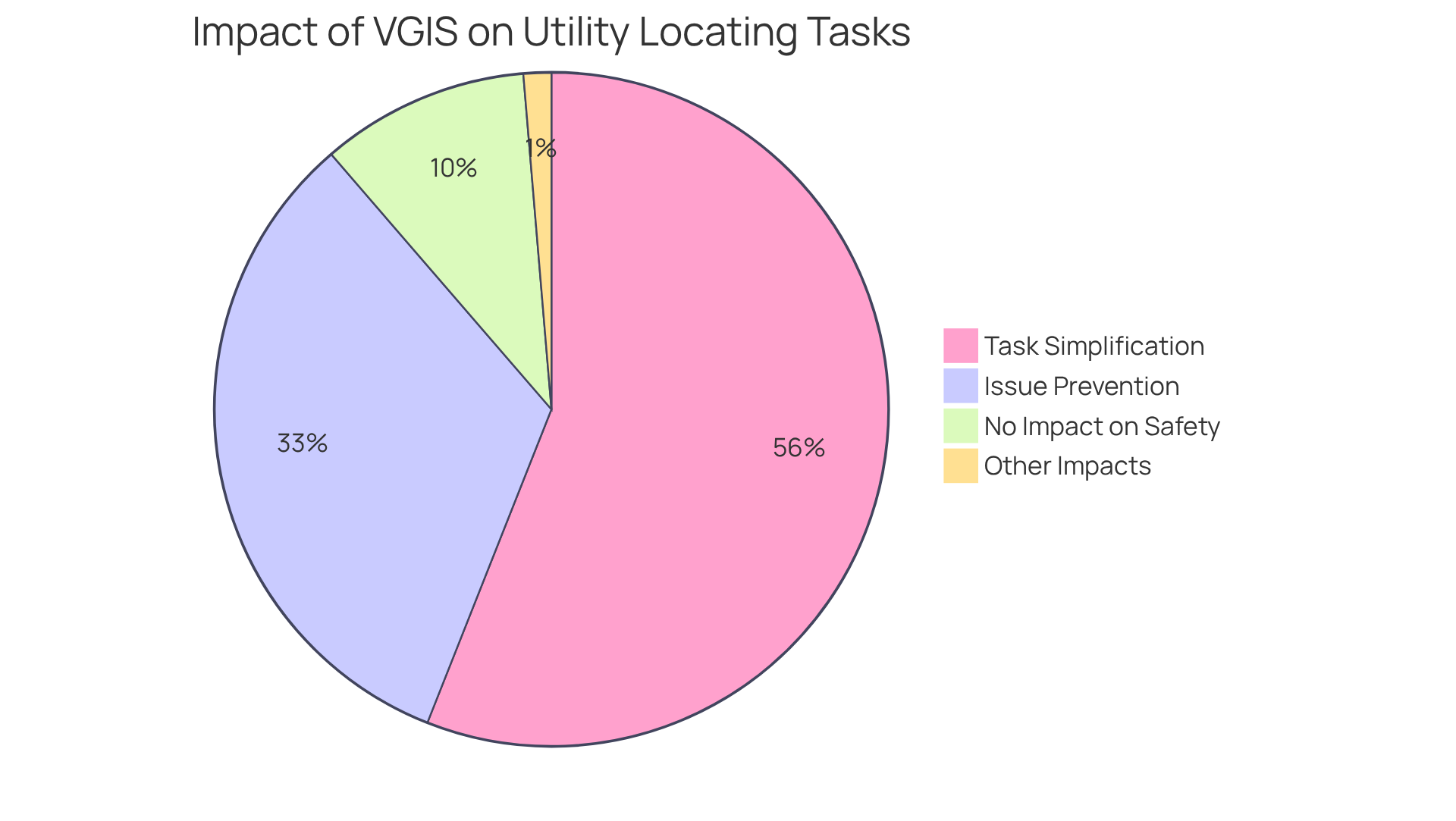
SmartTek Solutions: Enhancing Training and Safety Protocols with Augmented Reality
SmartTek Solutions leverages augmented reality in construction to revolutionize training programs for construction workers. By simulating real-world scenarios within a controlled environment, augmented reality in construction training modules empower workers to practice safety protocols and operational procedures without the inherent risks of on-site training. This innovative strategy not only enhances safety awareness but also equips workers to tackle real-life challenges they may encounter on the job.
As research indicates, such immersive training experiences significantly improve retention and application of critical skills, positioning workers for success in their roles.
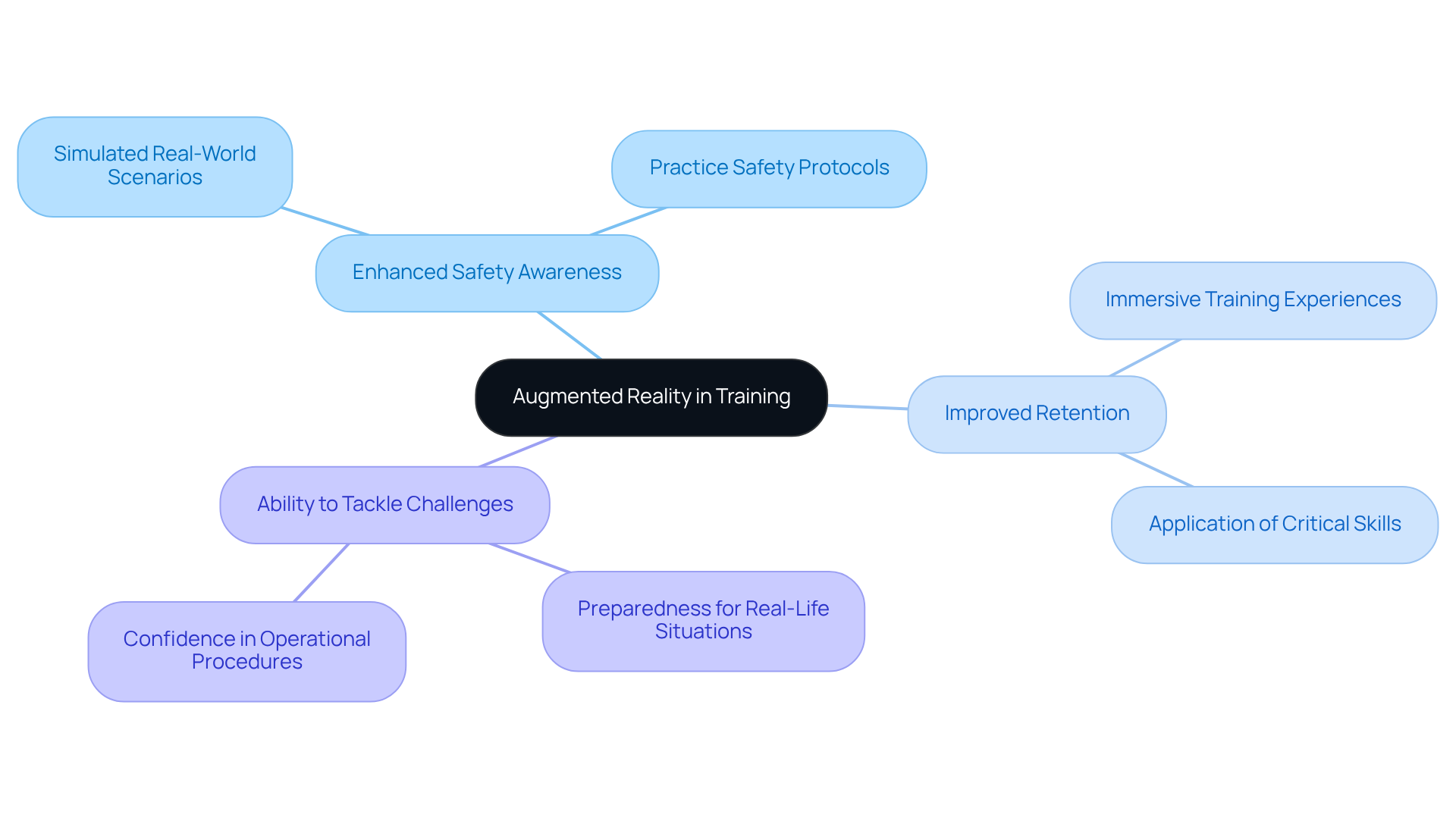
RevItGods: Streamlining Workflows in BIM Projects with Augmented Reality
RevItGods leverages augmented reality within BIM workflows, empowering teams to visualize and engage with 3D models in real-time. This innovative capability significantly enhances collaboration among architects, engineers, and contractors, fostering a shared understanding of project objectives and challenges. By streamlining communication and reducing misunderstandings, RevItGods enables teams to deliver projects with greater efficiency and effectiveness. In an industry where clarity and precision are paramount, adopting such advanced technologies is not just beneficial; it is essential for success.
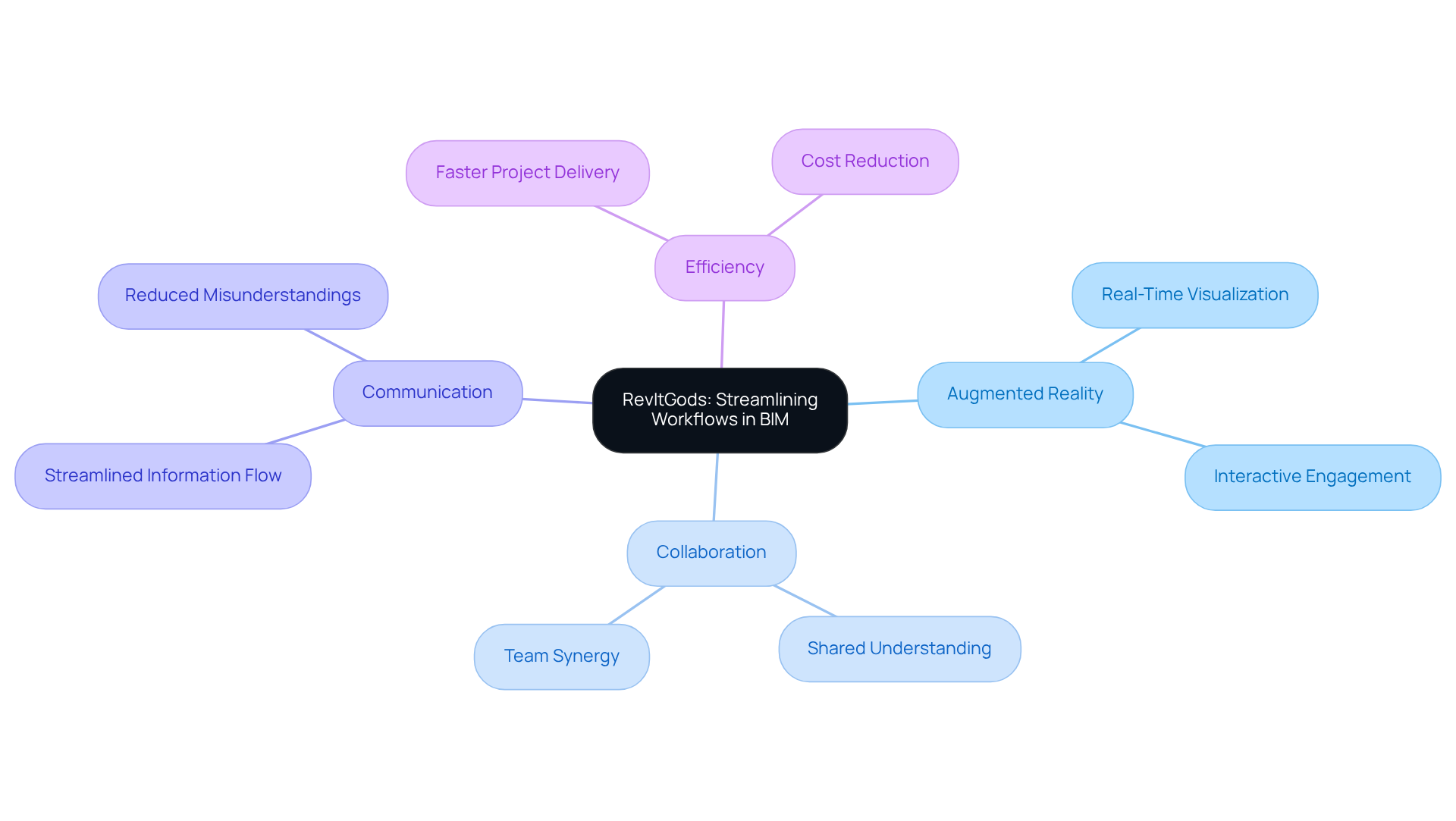
TeamViewer: Facilitating Real-Time Collaboration in Construction with AR
TeamViewer's solutions utilizing augmented reality in construction revolutionize real-time collaboration among construction teams, empowering remote specialists to assist on-site workers with intricate tasks. By leveraging AR-enhanced video calls, teams can share visual information instantly, significantly improving communication and minimizing the necessity for physical site visits. This innovative technology not only boosts efficiency but also ensures that projects remain on schedule.
Research indicates that companies utilizing AR report an impressive average productivity improvement of 32% and a 46% reduction in task completion time, according to industry studies. As Anshel Sag, a principal analyst for XR and spatial computing, aptly points out, 'Anyone who wants to be successful in AR today is going to want to cater to the enterprise market.'
Furthermore, the market for augmented reality in construction is projected to expand from $9 billion in 2021 to a staggering $150 billion by 2030, underscoring its transformative potential in the construction sector. Real-world applications of AR-enhanced video calls have proven effective in guiding workers through complex tasks, ultimately leading to improved project outcomes and enhanced safety standards on-site.
However, the building industry must confront challenges, including the high costs associated with AR technology, which highlights the critical need for these innovative solutions.
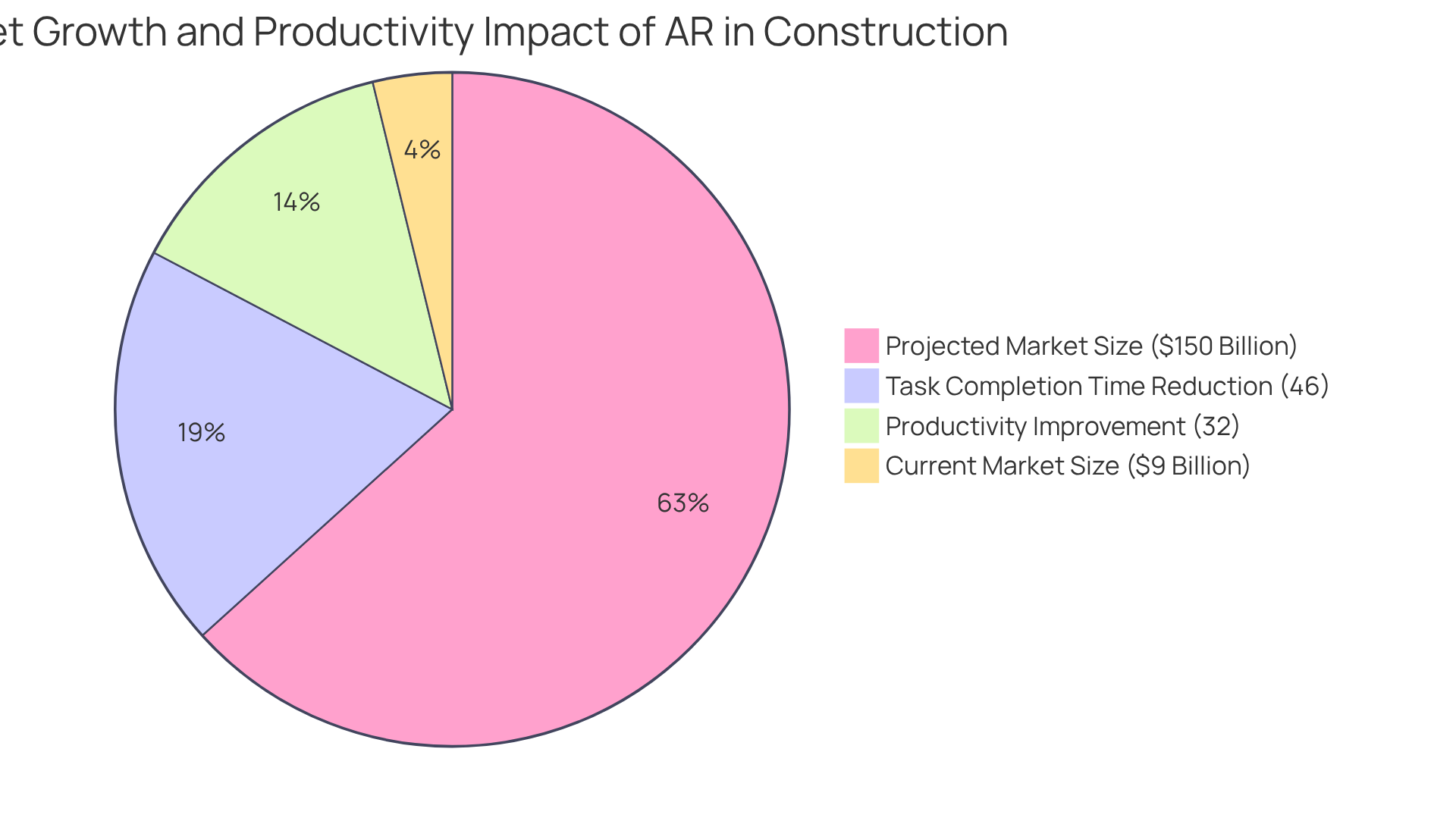
ASU: Leveraging Augmented Reality for Teaching Practical Construction Skills
Arizona State University (ASU) exemplifies leadership in education by integrating augmented reality in construction to teach practical building skills to students. By incorporating augmented reality in construction into the curriculum, ASU provides immersive learning experiences that closely replicate real-world building scenarios. This innovative approach, which incorporates augmented reality in construction, not only enhances comprehension but also equips students to tackle the challenges they will encounter in the industry.
Furthermore, collaboration with Magic Playbox, a leading XR studio, offers augmented virtual solutions that significantly enrich these educational experiences. With tools that enable students to visualize intricate building processes, ASU is committed to improving their practical skills and preparing them for successful careers.
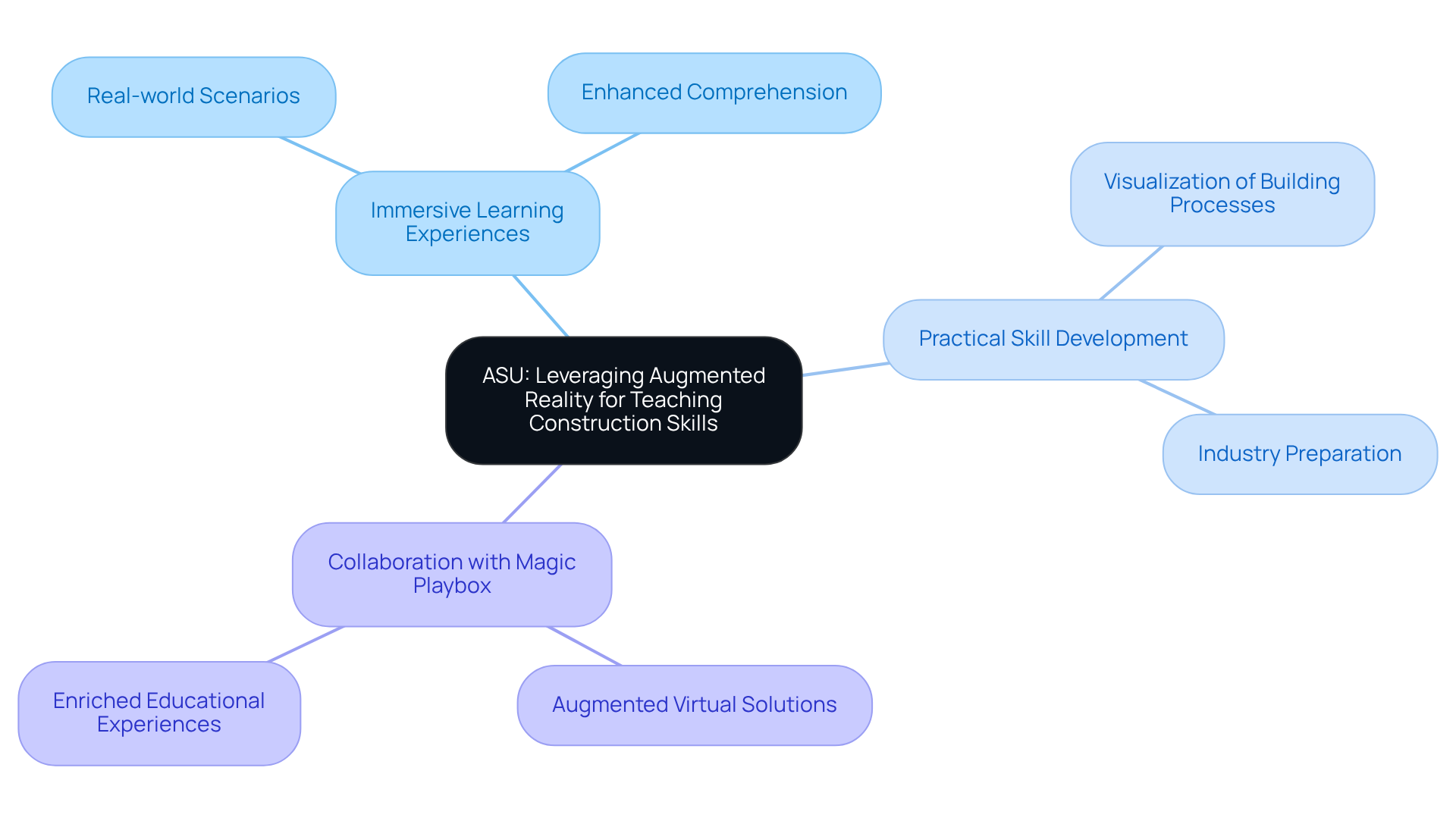
Research Insights: Enhancing Construction Project Management Efficiency with Augmented Reality
Recent research indicates that augmented reality (AR) can significantly enhance construction management efficiency. By providing real-time data visualization and improving communication among team members, AR empowers managers to make informed decisions swiftly. This capability not only leads to improved project timelines but also reduces costs and enhances overall project outcomes.
Embracing AR is not just a technological upgrade; it is a strategic move towards achieving excellence in project delivery. The industry stands at a pivotal moment where leveraging AR can redefine success in construction management.

Conclusion
The integration of augmented reality (AR) in the construction industry transcends mere trendiness; it represents a transformative force that significantly enhances project efficiency and collaboration. By leveraging AR technologies, construction teams can visualize projects in real-time, proactively identify potential issues, and streamline workflows. This ultimately leads to improved project outcomes. Such an innovative approach not only fosters better communication among stakeholders but also empowers professionals to make informed decisions swiftly.
Throughout this article, various applications of AR have been examined, showcasing its profound impact on diverse aspects of construction. From enhancing training protocols with SmartTek Solutions to revolutionizing project visualization through Trimble and Autodesk, the benefits of AR are unmistakable. Companies like Gamma AR and VGIS illustrate how AR addresses critical challenges in construction, including safety and utility mapping, while TeamViewer exemplifies its role in facilitating real-time collaboration. These insights underscore the growing recognition of AR as an essential tool for enhancing efficiency and precision in construction management.
As the construction industry continues to evolve, the embrace of augmented reality offers a strategic advantage. Organizations are strongly encouraged to invest in AR technologies and training programs to fully harness their potential. By doing so, they can not only enhance project delivery but also position themselves at the forefront of innovation in construction. The future is indeed bright for those who leverage AR, paving the way for a more efficient and effective construction landscape.
Frequently Asked Questions
What is Magic Playbox and how does it enhance construction engagement?
Magic Playbox utilizes XR technology to create immersive augmented reality solutions for the construction sector. By overlaying digital models onto physical work sites, it enhances collaboration and decision-making, allowing teams to visualize projects in real-time and identify potential issues early in the construction phase.
How does Trimble's augmented reality solution improve project visualization and collaboration?
Trimble's AR solutions, such as SiteVision, allow construction professionals to visualize 3D models in real-world environments, enhancing collaboration by facilitating direct observation of design intent on-site. This leads to real-time discussions and adjustments, ultimately improving project outcomes.
What are some challenges associated with adopting augmented reality in construction?
Challenges include high initial investment costs and resistance to new technology. Additionally, organizations may face hardware compatibility and scalability issues when integrating AR solutions.
What statistics indicate the trend of mobile applications in construction?
Statistics show that 82% of general contractors and 72% of specialty contractors are employing mobile applications on job sites, highlighting a growing trend toward digital solutions that enhance efficiency and precision.
How does Autodesk utilize augmented reality in its design software?
Autodesk integrates AR into its design software, allowing architects and engineers to visualize their designs in the context of the actual construction site. This capability improves design precision, helps identify discrepancies early, and enhances overall project efficiency.
What are the reported benefits of using augmented reality in construction?
Research indicates that using AR can enhance design accuracy by up to 30% and result in cost savings, with some organizations achieving reductions in design-related expenses by as much as 20%. AR also facilitates real-time feedback and informed decision-making.
Why is effective communication emphasized in augmented reality applications in construction?
Effective communication is vital for enhancing collaboration among teams. The ability to share information seamlessly through AR tools allows for better coordination and reduces the likelihood of errors during the construction process.




